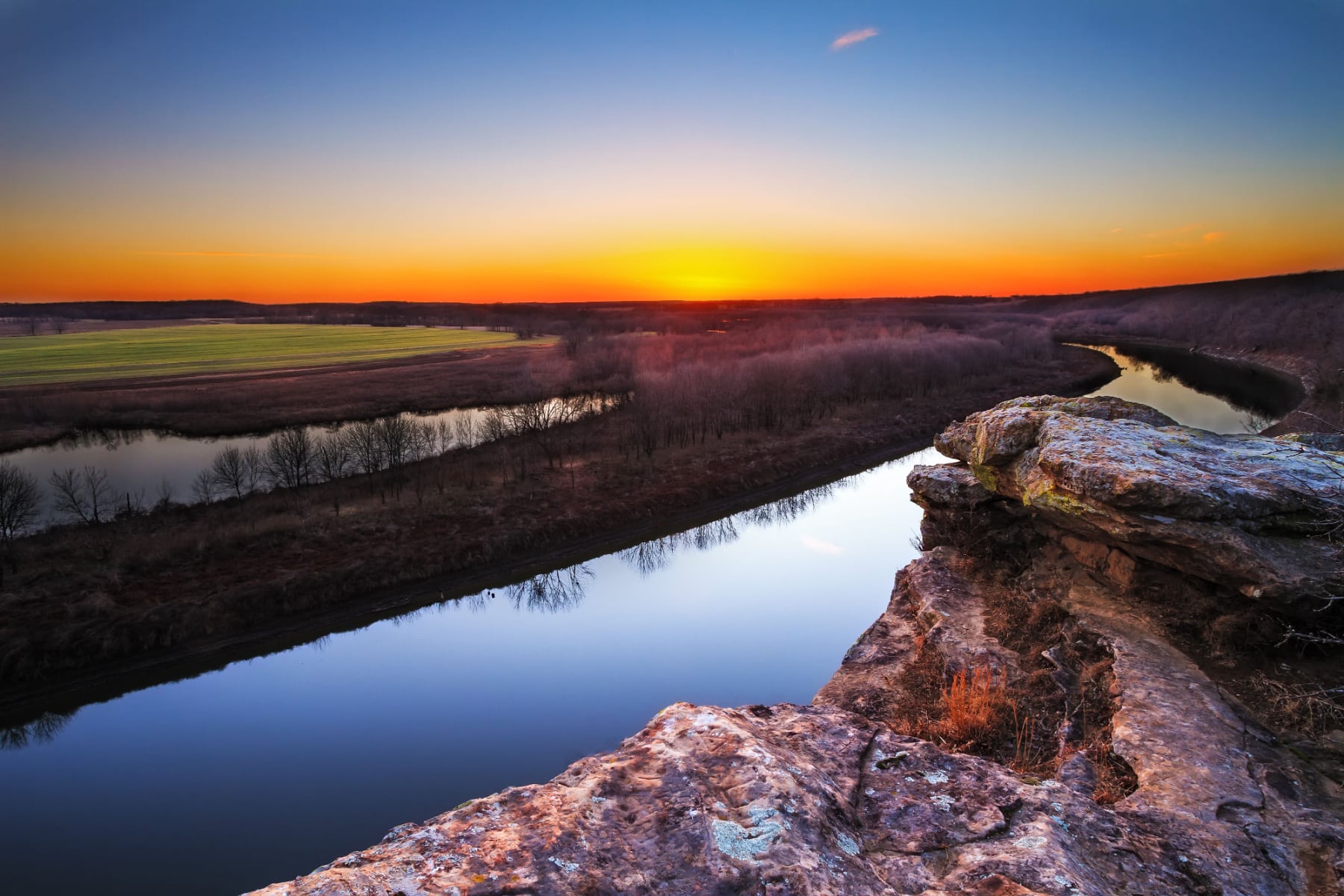
Article Summary: Missouri Landmarks
Missouri Landmarks. More Than Just Parks has 15 incredible must-see sites for you to visit.
There’s so much more to this exciting place than the St. Louis Cardinals. In this article, we’ll familiarize you with the incredible landmarks located in the “Show Me” state.
We’ve got incredible places, iconic memorials, fascinating museums, epic monuments and so much more.
We’re going to give you our list of the Top 15 Landmarks In Missouri.
So, What Is A Landmark?
Well, it’s a place of “a special character or special historical or aesthetic interest or value as part of the development, heritage, or cultural characteristics of a city, state, or nation.”
Why visit these places? Because landmarks connect us to the past. Through visiting these wonderful places where history occurred we find our roots. It allows us to feel like we are a part of something much bigger than ourselves.
And, speaking of history, did I mention that I taught the subject? I spent a lifetime teaching about the history behind many of these amazing sites. Then I got to see them firsthand. And now I’m sharing the fascinating stories of these places with you. It doesn’t get any better than that!
So, without further ado, let’s dive in.
Table of Contents: Missouri Landmarks
Missouri Landmarks
Some Fascinating Facts About Missouri
Here are some fascinating facts about Missouri:
- Gateway Arch: The Gateway Arch, located in St. Louis, is the tallest arch monument in the world. Standing at 630 feet (192 meters) tall, it symbolizes the gateway to the west and commemorates Thomas Jefferson’s role in expanding the United States.
- Mark Twain: Missouri was the birthplace of Samuel Clemens, better known by his pen name Mark Twain. Twain is one of America’s most beloved writers, known for his iconic works such as “The Adventures of Tom Sawyer” and “Adventures of Huckleberry Finn.”
- Kansas City Barbecue: Missouri is famous for its barbecue, and Kansas City, in particular, is renowned for its mouthwatering barbecue scene. The city is home to a variety of delicious barbecue styles, including slow-smoked meats, tangy sauces, and signature dishes like burnt ends.
- Anheuser-Busch: St. Louis is the headquarters of Anheuser-Busch, one of the largest breweries in the world. The company produces popular beer brands such as Budweiser and Bud Light. The Anheuser-Busch brewery in St. Louis is also a popular tourist attraction, offering tours and tastings.
- Lake of the Ozarks: Missouri is home to the Lake of the Ozarks, a massive reservoir with over 1,150 miles (1,850 kilometers) of shoreline. It is a popular vacation spot, offering boating, fishing, water sports, and numerous resorts and entertainment options.
- Harry S. Truman: The 33rd President of the United States, Harry S. Truman, was born and raised in Missouri. He is known for his leadership during the end of World War II, the implementation of the Marshall Plan, and the decision to drop atomic bombs on Hiroshima and Nagasaki.
- Branson: Branson, a city in southwestern Missouri, is often referred to as the “Live Music Show Capital of the World.” It offers a wide range of entertainment options, including live music performances, comedy shows, and variety acts. Branson attracts millions of visitors each year.
- Missouri River: The Missouri River is the longest river in North America, stretching for approximately 2,341 miles (3,767 kilometers). It flows through the state of Missouri and plays a significant role in the state’s history, economy, and transportation.
- Civil War History: Missouri has a rich history related to the American Civil War. It was a border state, meaning it remained part of the Union but had significant pro-Confederate sympathies. The state witnessed several battles and skirmishes during the war.
- Walt Disney: The legendary entrepreneur and animator Walt Disney spent his childhood in Marceline, Missouri. He often credited his time in Missouri as a source of inspiration for his later creations, including Disneyland and Disney World.
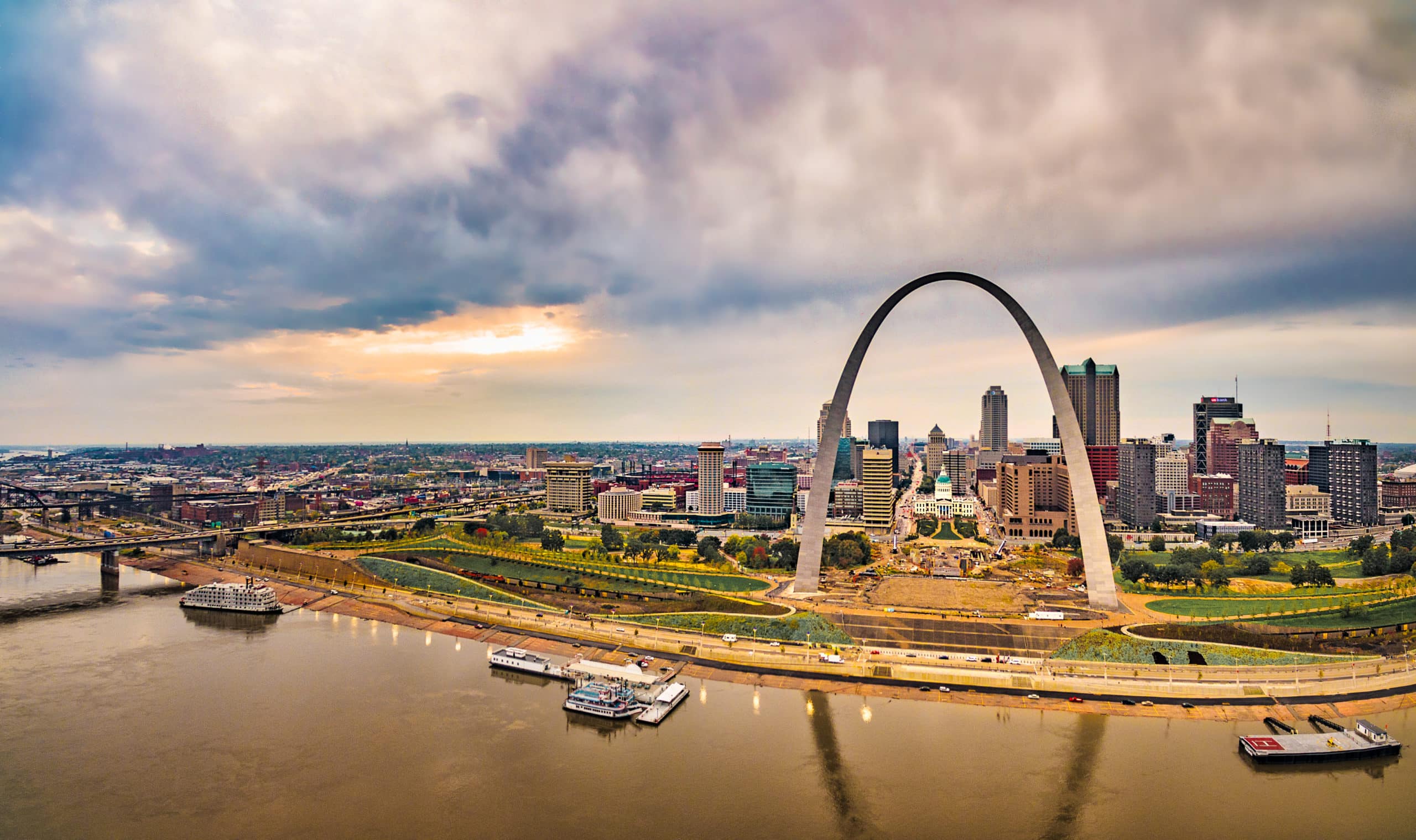
Gateway Arch, St. Louis, Missouri | Missouri Landmarks
Top 15 Missouri Landmarks
15. General John J. Pershing Boyhood Home State Historic Site
Missouri is the “Show Me” state. More Than Just Parks is going to show you the Top 15 Missouri Landmarks. We kick-off our list with a site which celebrates America’s top soldier in the First World War. It’s the General John J. Pershing Boyhood Home State Historic Site.
The General John J. Pershing Boyhood Home State Historic Site is a significant landmark located in Laclede, Missouri, United States. It commemorates the early life and upbringing of General John J. Pershing, one of America’s most distinguished military leaders. The site preserves the original house where Pershing spent his formative years and provides insights into his life before he achieved national prominence.
Situated in a rural setting, the historic site encompasses several buildings and exhibits that offer visitors a glimpse into Pershing’s early life and the era in which he grew up. The centerpiece of the site is the two-story frame house that was the boyhood home of General Pershing. Built in the mid-19th century, the house has been carefully restored to its original condition, giving visitors an authentic experience of what life was like during Pershing’s childhood.
What Visitors Can See
Inside the house, visitors can explore period-furnished rooms that reflect the lifestyle of the Pershing family. The rooms are decorated with furniture, personal belongings, and artifacts from the time, providing a vivid portrayal of the living conditions and domestic environment of that era. The exhibits also feature photographs and interpretive panels that highlight Pershing’s early life, his family, and the local community.
Adjacent to the house, there is a visitor center that provides additional information about General Pershing’s life and achievements. The center houses displays with historical artifacts, interactive exhibits, and informative panels that delve into Pershing’s military career, including his leadership during World War I. Visitors can learn about his role as the commander of the American Expeditionary Forces and his significant contributions to the war effort.
The site also features beautifully landscaped grounds, including a small memorial garden and a walking trail. The garden pays homage to Pershing’s military legacy and offers a tranquil setting for reflection. The walking trail meanders through the surrounding countryside, allowing visitors to enjoy the natural beauty of the area and appreciate the landscapes that shaped Pershing’s early years.
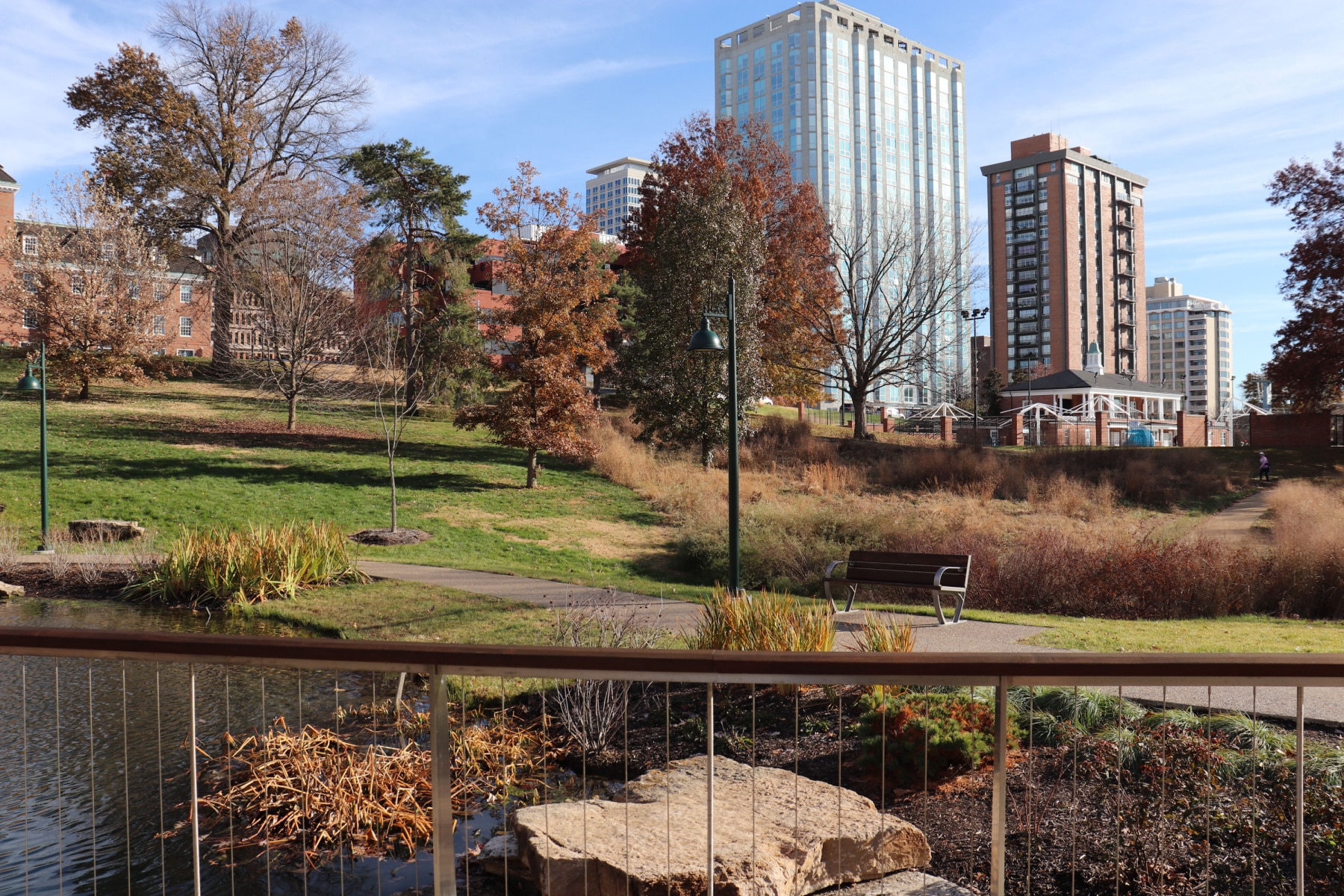
14. Anheuser-Busch Brewery
Our next Missouri landmark celebrates the largest beer company in the world. At #14 on our list of the Best Missouri Landmarks is the Anheuser-Busch Brewery.
The history of the Anheuser-Busch Brewery dates back to 1852 when it was established by Eberhard Anheuser in St. Louis, Missouri. Anheuser was a successful businessman and entrepreneur who had previously owned a soap and candle-making business. However, he recognized the growing popularity of beer and decided to venture into the brewing industry.
In 1860, Eberhard Anheuser’s daughter, Lilly, married Adolphus Busch, a young German immigrant who had joined the brewery as a salesman. Adolphus Busch quickly demonstrated his business acumen and innovative spirit, eventually rising to become a partner in the company. With his vision and expertise, the brewery flourished and underwent significant transformations under the new name, Anheuser-Busch.

Anheuser-Busch Brewery complex at Ninth and Pestalozzi Streets | Courtesy of Wikimedia Commons
A Unique Brewing Method
One of the most pivotal moments in the brewery’s history occurred in the late 1870s when Adolphus Busch and his friend, Carl Conrad, developed a unique brewing method using pasteurization and refrigeration. This innovation allowed Anheuser-Busch to produce a consistent and high-quality beer, which helped propel the brewery’s success and popularity.
The turning point for Anheuser-Busch came with the introduction of its flagship brand, Budweiser, in 1876. Budweiser, a lager beer named after the Czech city of Budweis, quickly gained widespread recognition and became synonymous with the brewery. The success of Budweiser solidified Anheuser-Busch’s position as one of the leading breweries in the United States.
In the early 20th century, under the leadership of Adolphus Busch’s son, August A. Busch Sr., the brewery continued to expand its operations and market reach. August A. Busch Sr. implemented aggressive marketing strategies, including the use of innovative advertising and sponsorships, which helped establish Anheuser-Busch as a dominant force in the brewing industry.
Anheuser-Busch faced challenges during Prohibition, which lasted from 1920 to 1933, when the production and sale of alcoholic beverages were banned in the United States. To survive, the brewery diversified its operations and produced non-alcoholic products like soft drinks, malt extract, and ice cream. After the repeal of Prohibition, Anheuser-Busch quickly resumed beer production and regained its market share.
Anheuser-Busch Today
In the later part of the 20th century, Anheuser-Busch continued to innovate and expand. The company introduced new brands and acquired several breweries both within the United States and internationally. In 2008, Anheuser-Busch merged with InBev, a Belgian-Brazilian brewing company, to create Anheuser-Busch InBev, the world’s largest brewing company.
Today, the Anheuser-Busch Brewery remains headquartered in St. Louis and operates numerous breweries across the United States. It produces a wide range of beer brands, including Budweiser, Bud Light, Michelob, Stella Artois, and many others. The brewery has become an iconic symbol of American brewing history and a major player in the global beer industry, continuing the legacy of quality and innovation established by its founders.

Anheuser-Busch Brewery at St. Louis | Courtesy of Wikimedia Commons
13. Mutual Musicians Foundation Building
Next up on our list of the Best Missouri Landmarks at #13 is the Mutual Musicians Foundation Building.
The Mutual Musicians Foundation Building, also known as the “18th and Vine Historic District” or the “Kansas City Jazz Walk of Fame,” is a historic building located in the 18th and Vine neighborhood of Kansas City, Missouri.
The building was constructed in 1910 and served as the headquarters of the Local 627 of the American Federation of Musicians. The building was used as a meeting place for jazz musicians and as a venue for live music performances.
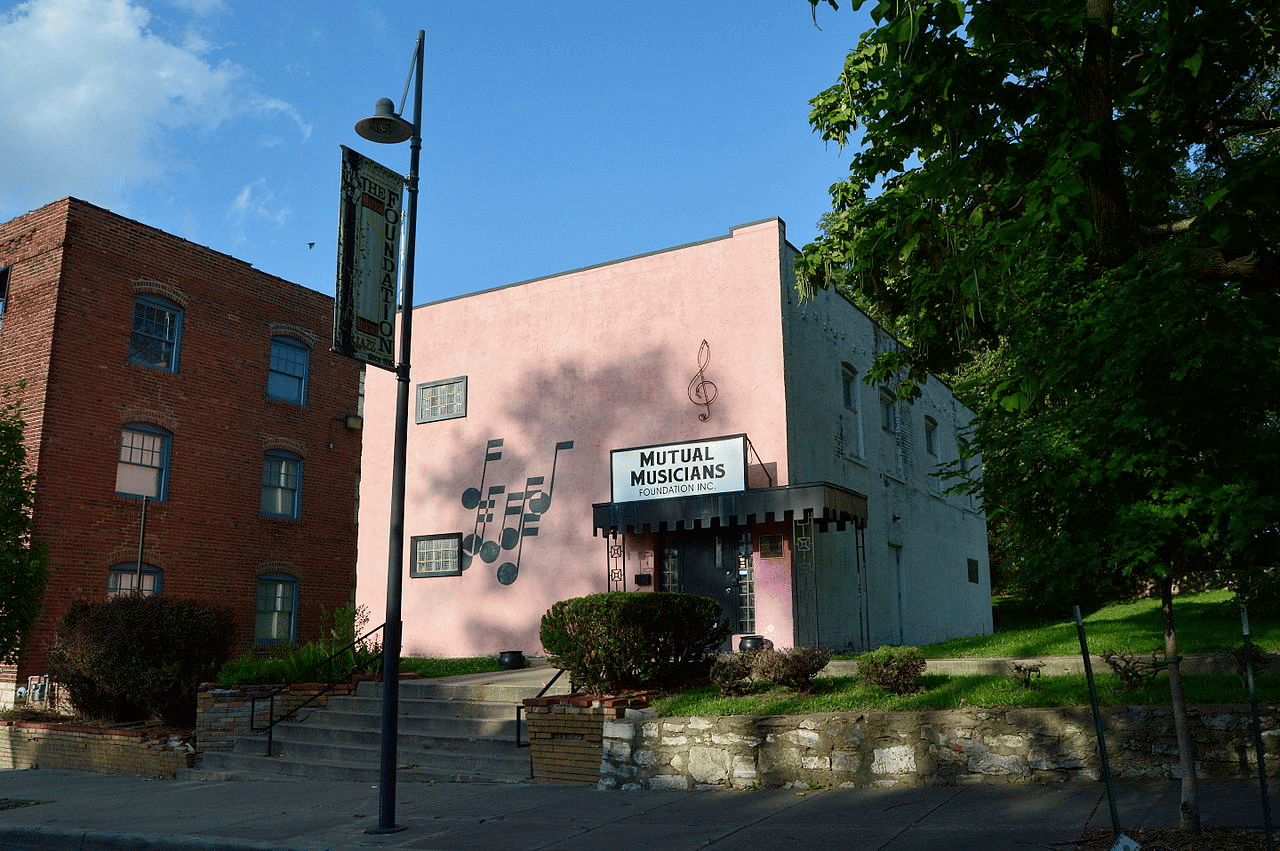
A Significant Center Of Jazz Music
The 18th and Vine neighborhood was a significant center of jazz music in the early 20th century, and it was home to many of the most prominent jazz musicians of the time, including Count Basie, Benny Moten, and Charlie Parker.
The Mutual Musicians Foundation Building was an important gathering place for these musicians, and it was a key part of the vibrant jazz scene in Kansas City.
The building was closed in the late 1970s and fell into disrepair, but it was eventually purchased and restored by the Mutual Musicians Foundation, a non-profit organization established to preserve the building and the legacy of jazz music in Kansas City.
The building was re-opened in 2001 and now serves as a museum and cultural center, with exhibits on the history of jazz music in Kansas City, a performance space, and a jazz education program.
The Mutual Musicians Foundation Building is an important historical and cultural landmark, preserving the history of jazz music in Kansas City and its contributions to the development of this genre.
The building is open to the public, and it is a popular destination for jazz enthusiasts and history buffs.

12. Lake Of The Ozarks
Our next Missouri landmark was created by the construction of the Bagnell Dam, which began on Aug. 8, 1929, and completed in April 1931. With a surface area of 54,000 acres, it was the largest manmade lake in the United States at the time of its completion, and one of the largest manmade lakes in the world.
At #12 on our list of the Best Missouri Landmarks is Lake of the Ozarks.
Lake of the Ozarks is a vast reservoir located in the central part of the state of Missouri, United States. It was created by the impoundment of the Osage River in the 1930s as part of a hydroelectric power project. The lake spans across four counties: Camden, Miller, Morgan, and Benton. With a shoreline stretching over 1,150 miles (1,850 kilometers), it is one of the largest man-made lakes in the United States.
The Lake of the Ozarks is renowned for its natural beauty, offering a picturesque setting surrounded by rolling hills, forests, and limestone bluffs. The area attracts visitors from across the country who come to enjoy its recreational opportunities and scenic landscapes. The lake itself covers approximately 54,000 acres (22,000 hectares) and offers ample space for boating, fishing, swimming, and various water sports.

Things To Do
Boating is a popular activity on the lake, and it is not uncommon to see a wide variety of watercraft, including powerboats, sailboats, jet skis, and pontoons, cruising along its expansive waters. Several marinas and boat rental facilities are available, providing easy access to the lake for visitors who wish to explore its many coves, inlets, and channels.
Fishing enthusiasts are drawn to Lake of the Ozarks due to its reputation as a prime fishing destination. The lake is home to a diverse range of fish species, including largemouth bass, crappie, catfish, bluegill, and more. Anglers can be found casting their lines from boats, docks, or the shoreline, hoping to reel in their next big catch.
Aside from water-based activities, the Lake of the Ozarks region offers numerous other attractions. The shoreline is dotted with resorts, hotels, vacation rentals, and campgrounds, providing accommodations for visitors looking to spend a few days or more in the area. There are also several golf courses, state parks, and hiking trails that allow visitors to immerse themselves in the natural beauty of the region.
The lake area is known for its vibrant social scene, especially during the summer months. It features an array of restaurants, bars, and entertainment venues that offer live music, dancing, and a lively atmosphere. Additionally, the region hosts several annual events and festivals, including boat races, fishing tournaments, car shows, and fireworks displays, which further enhance the recreational and entertainment options for visitors.

11. Scott Joplin House State Historic Site
Our next Missouri landmark is significant as the only known surviving residence associated with African-American composer Scott Joplin (c. 1867–1917).
At #11 on our list of the Best Missouri Landmarks is the Scott Joplin House State Historic Site. It commemorates the life and achievements of Scott Joplin, an influential African-American composer and pianist known as the “King of Ragtime.”
The historic site is situated in the neighborhood of Midtown, where Scott Joplin lived for a significant portion of his life. The house itself is a modest two-story brick building that served as Joplin’s residence during the early 1900s. It has been preserved and restored to reflect the time period when Joplin lived there, providing visitors with a glimpse into his life and the environment in which he composed his iconic music.
Inside the Scott Joplin House, visitors can explore various rooms that have been furnished to resemble how they would have appeared during Joplin’s time. The house is adorned with period furniture, decorations, and artifacts, allowing visitors to experience the ambiance of a late 19th-century home. The exhibits also feature photographs, sheet music, and interpretive panels that provide insights into Joplin’s life, his musical career, and his contributions to the development of ragtime music.
The site also includes a visitor center that provides additional information about Scott Joplin’s life and his impact on American music. The center houses displays with historical artifacts, audio recordings, and interactive exhibits that delve into Joplin’s musical compositions, his collaborations with other musicians, and the cultural significance of ragtime during the early 20th century.

Scott Joplin House, 2658A Delmar Boulevard, St. Louis, Missouri | Courtesy of Wikimedia Commons
Top 10 Missouri Landmarks
10. Missouri Botanical Gardens
We’re on to our Top 10 Missouri landmarks. At #10 on our list is a center for botanical research and science education, as well as an oasis in the city of St. Louis. Welcome to the Missouri Botanical Gardens.
The Missouri Botanical Gardens, also known informally as Shaw’s Garden, is a botanical garden located at 4344 Shaw Boulevard in St. Louis, Missouri. It was founded in 1859 by philanthropist Henry Shaw.
The Garden is one of the oldest botanical gardens in the United States. It’s not only a National Historic Landmark, but also registered on the National Register of Historic Places.
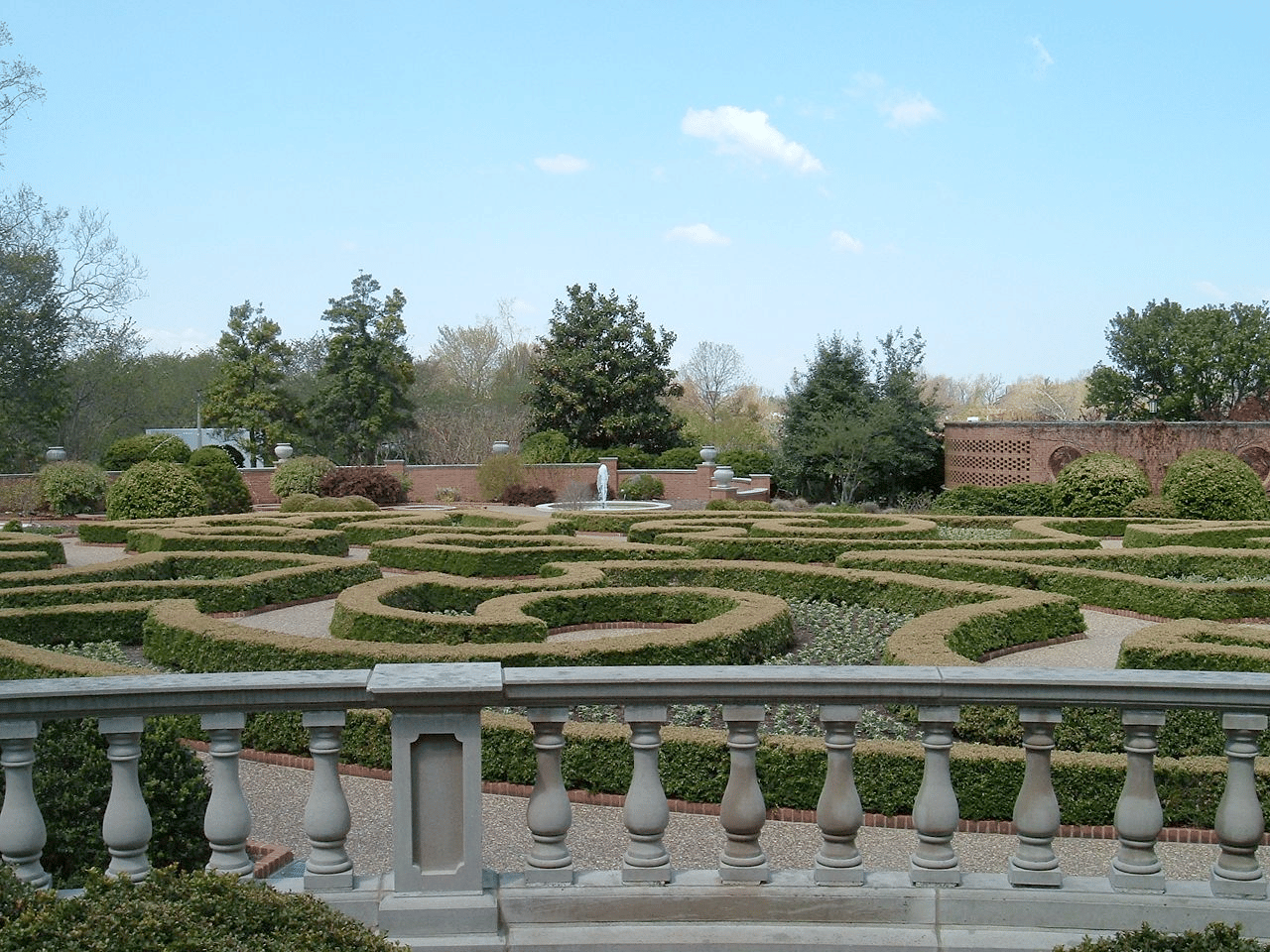
Things To Do
Here are some of the things you can do at the Missouri Botanical Garden:
- Explore the Garden’s grounds: The Missouri Botanical Garden features 79 acres of beautifully manicured gardens and landscapes, including the Japanese Garden, Climatron, the Chinese Garden, and the English Woodland Garden.
- Visit the Climatron: The Climatron is a geodesic dome greenhouse that houses a tropical rainforest. It’s a great place to explore and see a variety of exotic plants and animals.
- Tour the Kemper Center for Home Gardening: The Kemper Center is a resource center for home gardeners, featuring interactive exhibits and displays on a variety of gardening topics.
- Visit the Butterfly House: The Butterfly House is a tropical conservatory that features hundreds of live butterflies from around the world.
- Attend a concert or special event: The Garden hosts a variety of concerts, festivals, and special events throughout the year, including the Garden Glow holiday light exhibit.
- Take a guided tour: The Garden offers a variety of guided tours, including a tram tour, a walking tour, and a photography tour.
- Visit the Children’s Garden: The Children’s Garden is a fun and interactive space for kids to explore and learn about plants and nature.
- Attend a class or workshop: The Garden offers a variety of classes and workshops on topics such as gardening, cooking, and art.
- Visit the Plant Science Center: The Plant Science Center is home to the Garden’s research and conservation efforts, and features exhibits and displays on plant science and conservation.
- Relax and enjoy the beauty: Whether you’re strolling through the gardens, enjoying a picnic, or simply taking in the scenery, the Missouri Botanical Garden is a wonderful place to relax and enjoy the beauty of nature.
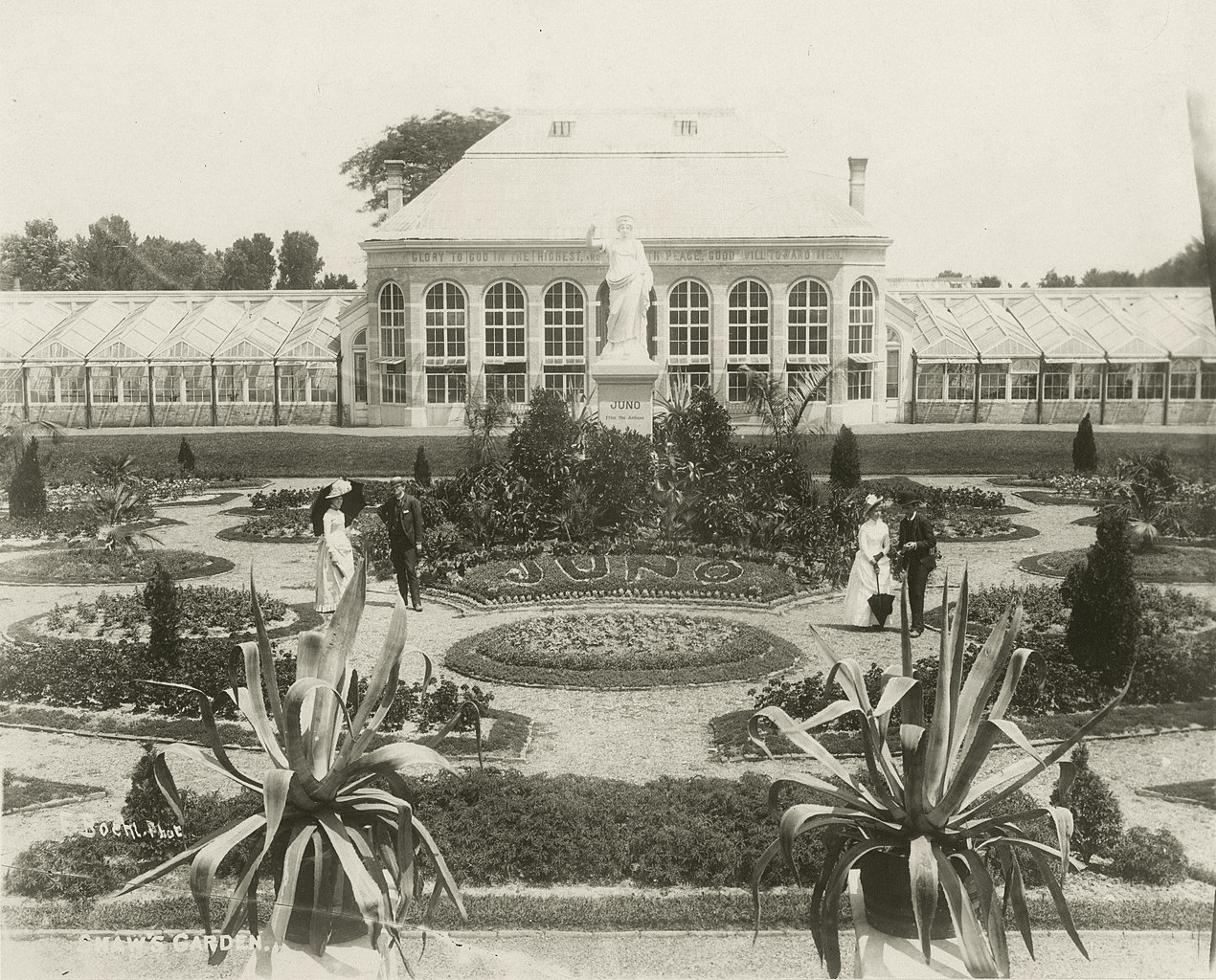
9. Laura Ingalls Wilder Home & Museum
Our next Missouri landmark is a favorite with people who remember the popular 1970s television series “Little House On The Prairie.” Starring Michael Landon, the series was based on the family of Laura Ingalls Wilder who wrote a series of books by the same name.
At #9 on our list of the Best Missouri Landmarks is the Laura Ingalls Wilder Home & Museum.
The Laura Ingalls Wilder Home & Museum is a historic site located in Mansfield, Missouri that celebrates the life and work of Laura Ingalls Wilder, the author of the beloved “Little House on the Prairie” books. The site consists of the Ingalls family home, a museum, and several other historic buildings.
Laura Ingalls Wilder was born in Wisconsin in 1867 and spent much of her childhood traveling with her family across the American Midwest. In 1894, she married Almanzo Wilder and settled in Mansfield, Missouri, where they lived for the rest of their lives.
It was in Mansfield that Wilder began writing her famous books about her childhood experiences, which would go on to become beloved classics of children’s literature.
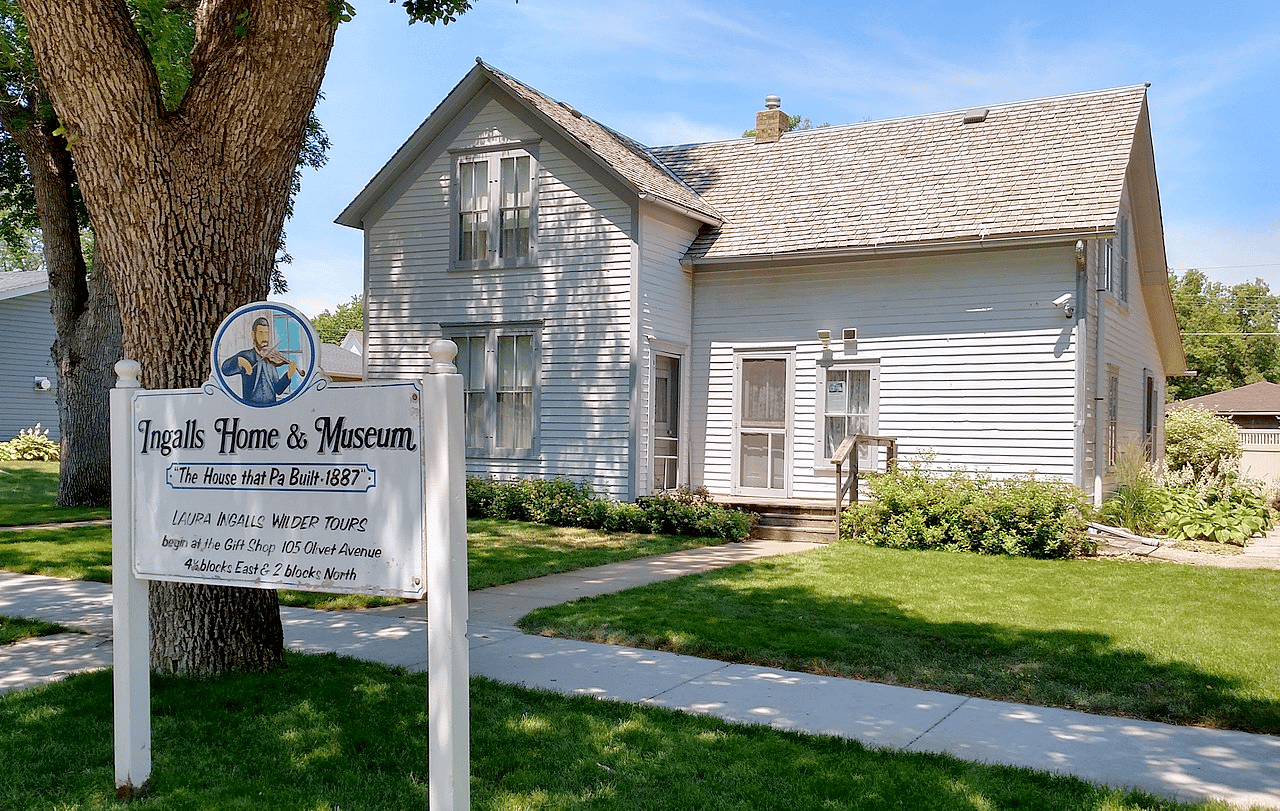
See The Place Where Laura Ingalls Wilder Spend The Last 60 Years Of Her Life
The Ingalls family home in Mansfield was built in 1894 and is where Laura Ingalls Wilder lived for the last 60 years of her life. After her death in 1957, the home was turned into a museum, and it has been open to the public ever since.
The museum features exhibits on Wilder’s life and the history of the area. Visitors can see the original manuscript of “Little House on the Prairie” and other artifacts related to Wilder’s life and work.
The site also includes several other historic buildings, including a one-room schoolhouse and a post office, which have been preserved to give visitors a glimpse of what life was like in rural Missouri in the late 19th and early 20th centuries.

8. Fort Osage National Historic Landmark
Our next Missouri landmark served a dual roles as both a military garrison and a trade center. Today, authentically attired historical interpreters take visitors on a journey through its extraordinary past. At #8 on our list of the Best Missouri Landmarks is Fort Osage National Historic Landmark.
The original Fort Osage was established in 1808 by the United States Army under the orders of President Thomas Jefferson. It was strategically situated on a bluff overlooking the Missouri River, serving as a trading post and a means to establish American influence among Native American tribes in the region. The fort was named after the Osage Native American tribe, who were prominent inhabitants of the area.
Today, the Fort Osage National Historic Landmark encompasses a reconstructed replica of the original fort, providing visitors with a glimpse into the daily life and operations of the outpost. The replica was meticulously reconstructed based on historical records and archaeological findings, ensuring accuracy in its design and layout.
What Visitors Can See
Within the fort, visitors can explore various buildings, including officers’ quarters, enlisted men’s barracks, a sutler’s store, and a blacksmith shop. These structures have been furnished with period-appropriate furniture, tools, and artifacts, creating an immersive experience that transports visitors back to the early 19th century. The fort also features interpretive exhibits and displays that provide historical context, explaining the significance of the fort and its role in the fur trade, diplomacy, and westward expansion.
Adjacent to the fort, there is a visitor center that offers additional information about the history of Fort Osage and the broader context of the western frontier during that era. The center houses exhibits with artifacts, maps, and informative panels, shedding light on the interactions between Native American tribes, fur traders, and the U.S. government. It also provides insights into the daily life of soldiers and civilians living at the fort.
The Fort Osage National Historic Landmark also boasts beautiful natural surroundings, including scenic overlooks, nature trails, and picnic areas. Visitors can enjoy breathtaking views of the Missouri River and explore the surrounding woodlands, which provide opportunities for hiking, birdwatching, and observing wildlife.
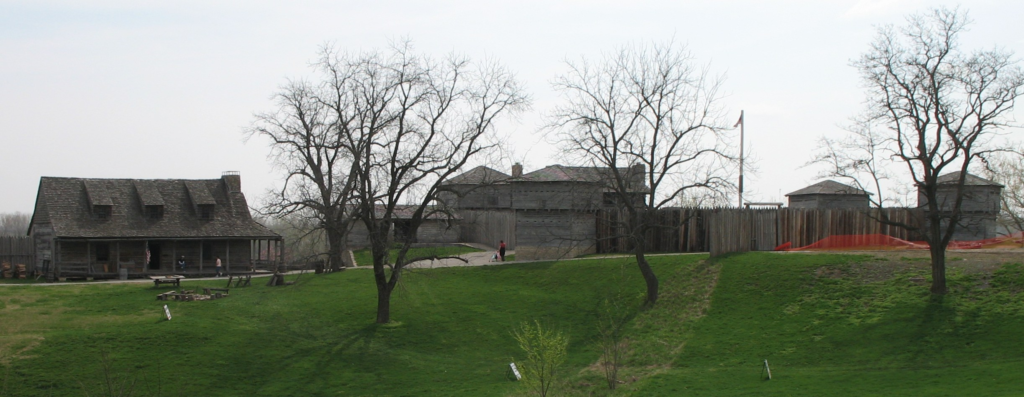
Fort Osage National Historic Landmark | Courtesy of Wikimedia Commons
7. Mark Twain Boyhood Home & Museum
We move from a historic fort to a literary legend At #7 on our list of the Best Historic Sites In Missouri is the Mark Twain Boyhood Home & Museum.
The Mark Twain Boyhood Home & Museum is a museum located in Hannibal, Missouri, that commemorates the life and legacy of Samuel Clemens, also known as Mark Twain, one of America’s most famous and celebrated authors.
The museum is located in the boyhood home of Samuel Clemens, where he lived from 1844 to 1853 and it is dedicated to preserving the history and legacy of Mark Twain and his connection to Hannibal.
Mark Twain spent his childhood and adolescence in Hannibal and it was the inspiration for many of the settings and characters in his most famous works, such as “The Adventures of Tom Sawyer” and “The Adventures of Huckleberry Finn.”
It also features exhibits on Mark Twain’s life and works, including artifacts, photographs, and memorabilia related to his childhood and his connection to Hannibal.
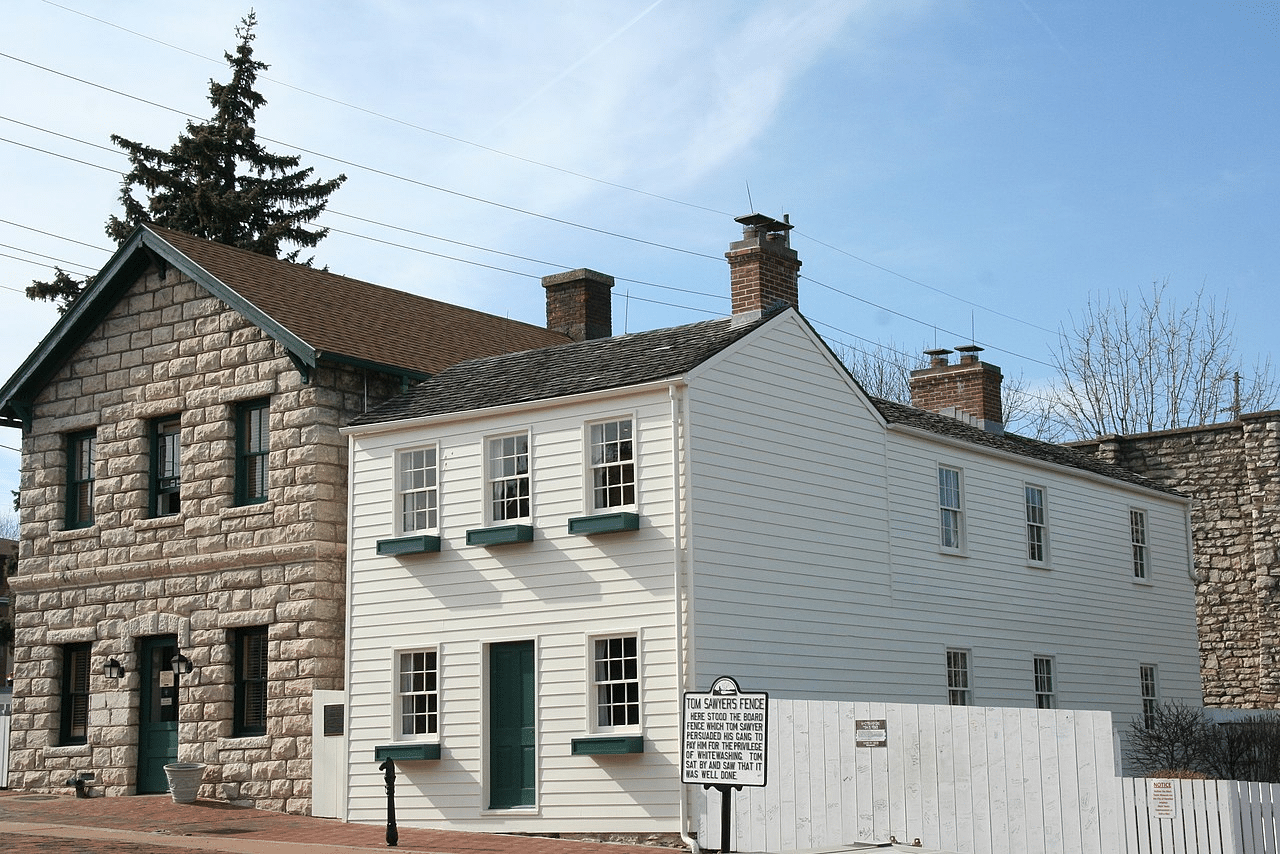
The Museum Offers A Variety Of Educational Programs, Tours and Special Events Throughout The Year
The museum’s collection includes Mark Twain’s boyhood home, the Mark Twain Museum, the Becky Thatcher House, and the Grant’s Drug Store, all of which are open to the public and offer a glimpse of the world that helped shape Mark Twain’s imagination.
It also offers a variety of educational programs, tours, and events throughout the year, including guided tours of the boyhood home and other sites, as well as special events and lectures related to Mark Twain and his works.
The Mark Twain Boyhood Home & Museum is an important cultural and historical landmark, preserving the legacy of one of America’s most celebrated authors and it’s a popular destination for literature enthusiasts and history buffs.
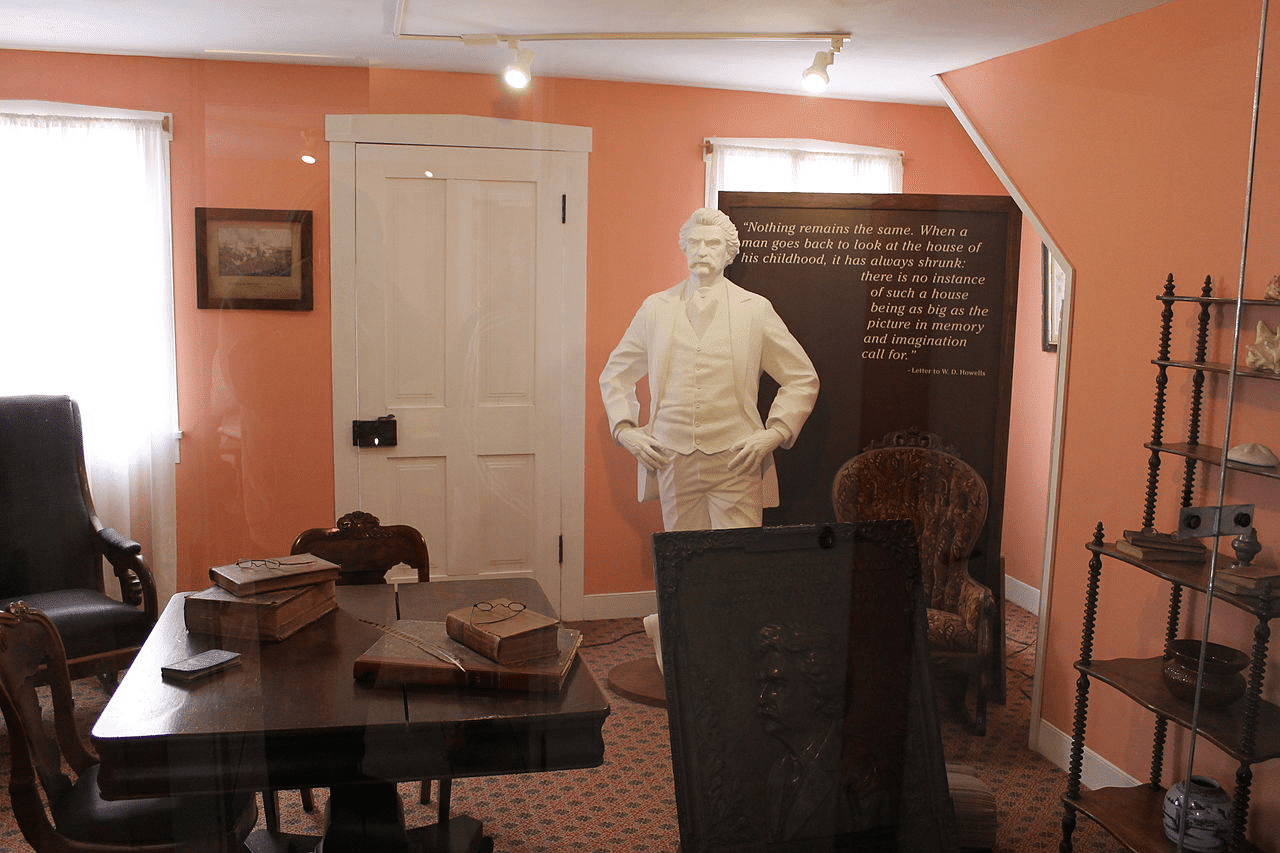
6. City Museum
Our next Missouri landmark is described as “four floors filled with miles of tunnels, a full cave system, over 30 slides, a circus, an arts area, a large outdoor climbing space, Architectural Museum, a Cabin that serves adult beverages, a Museum of Mayhem, Mirth and Mystery, and a ton more.”
At #6 on our list of the Best Missouri Landmarks is City Museum.
The City Museum is known for its eclectic and imaginative displays that repurpose salvaged materials and found objects to create an interactive environment. The museum encourages visitors to explore, climb, crawl, and interact with the exhibits, making it a popular destination for families, children, and adventurous individuals.
Inside the museum, you’ll find a vast array of attractions and exhibits that are both visually stunning and engaging. These include intricate mosaics, sculptures, tunnels, slides, climbing structures, and suspended walkways. The exhibits incorporate various materials such as reclaimed architectural elements, salvaged vehicles, airplane fuselages, and even a school bus that hangs precariously from the building’s exterior.
One of the main highlights of the City Museum is the Enchanted Caves, a network of dark tunnels, twisting passages, and hidden chambers. Visitors can crawl through narrow spaces, discover hidden surprises, and experience a sense of adventure as they navigate this subterranean labyrinth.

The logo for City Museum | Courtesy of Wikimedia Commons
MonstroCity
The museum also features an outdoor area called MonstroCity, which is an enormous playground built using salvaged industrial materials. MonstroCity includes towering steel structures, giant slides, climbing apparatuses, and even a life-size whale sculpture with a slide going through its mouth.
Additionally, the City Museum offers educational exhibits that focus on science, history, and art. These exhibits provide opportunities for hands-on learning and exploration, making the museum an engaging educational resource for school groups and visitors of all ages.
The City Museum’s creativity extends beyond its exhibits. It hosts special events, concerts, and workshops throughout the year, and even has spaces available for private events. The museum also features a rooftop area with a Ferris wheel and a panoramic view of the city, offering visitors a unique vantage point to admire the St. Louis skyline.

City Museum | Courtesy of Wikimedia Commons
Top 5 Missouri Landmarks
5. Wilson’s Creek National Battlefield
We’re on to the Top 5 Missouri landmarks. At #5 we have selected a place which commemorates one of the battles of the American Civil War – the bloodiest conflict in American history. It’s Wilson’s Creek National Battlefield.
Wilson’s Creek National Battlefield is a national battlefield located near Republic, Missouri, that commemorates the American Civil War Battle of Wilson’s Creek, which took place on August 10, 1861.
The battle was one of the first major engagements of the Civil War in the Western Theater, and it resulted in a Confederate victory.
The battle was fought between the Confederate Army of Missouri, led by General Sterling Price, and the Union Army of the Southwest, led by General Nathaniel Lyon.

A Significant Victory For The Confederacy
The battle was a significant victory for the Confederacy, as it prevented the Union army from advancing further into Missouri and established Confederate control over the state.
However, the battle also resulted in heavy casualties on both sides, with over 2,500 soldiers killed, wounded or missing. The battle marked the first time that a general from the Union army was killed in action in the Civil War.
Wilson’s Creek National Battlefield was established in 1960, and it includes a visitor center with exhibits and artifacts related to the battle and the Civil War.
The park also includes a 5-mile self-guided tour road that takes visitors to the key areas of the battlefield and includes interpretive markers that provide information on the battle and the troops who fought there. There are several monuments, memorials, and markers dedicated to the soldiers who fought in the battle.
Wilson’s Creek National Battlefield is managed by the National Park Service, and it is open to the public for tours and educational programs.

4. George Washington Carver National Monument
We’re on to the “Final Four” and at #4 we have a site which celebrates the life and legacy of George Washington Carver. It’s the George Washington Carver National Monument.
George Washington Carver was an American scientist, educator, and inventor. He was born into slavery in Missouri in the mid-1860s, but was able to overcome the obstacles of racial discrimination to become one of the most prominent scientists of his time.
Carver is best known for his pioneering research on peanuts and sweet potatoes, which led to the development of new products and helped to improve the lives of many farmers in the South. He also developed a variety of other products from crops such as soybeans, pecans, and sweet potatoes.
Carver was an advocate for racial equality and education, and he was a respected teacher and mentor to many young African American students.
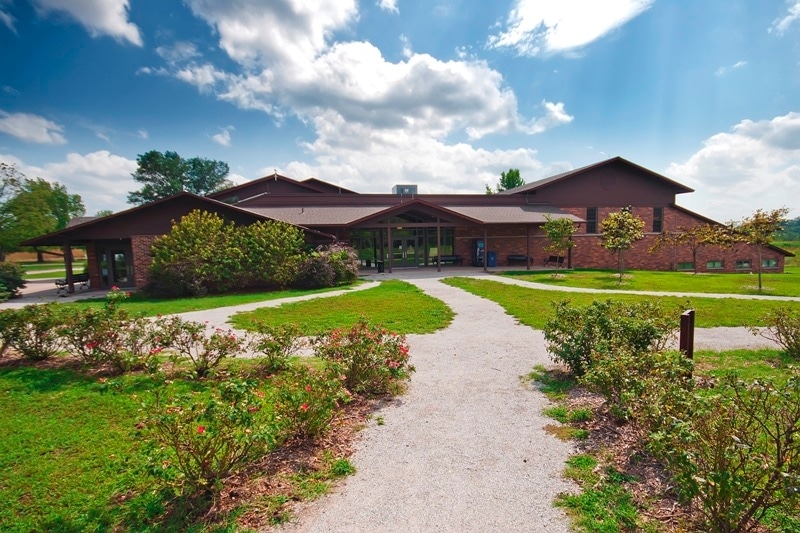
Learn About The Life & Times Of George Washington Carver
The George Washington Carver National Monument was established in 1943, and it includes a visitor center with exhibits and artifacts related to the life and work of George Washington Carver.
The park also includes a nature trail that takes visitors through the beautiful Ozark landscape and includes interpretive markers that provide information on the natural history of the area. There’s also includes a replica of Carver’s one-room schoolhouse, where he received his early education.
The George Washington Carver National Monument is managed by the National Park Service, and it is open to the public for tours and educational programs.
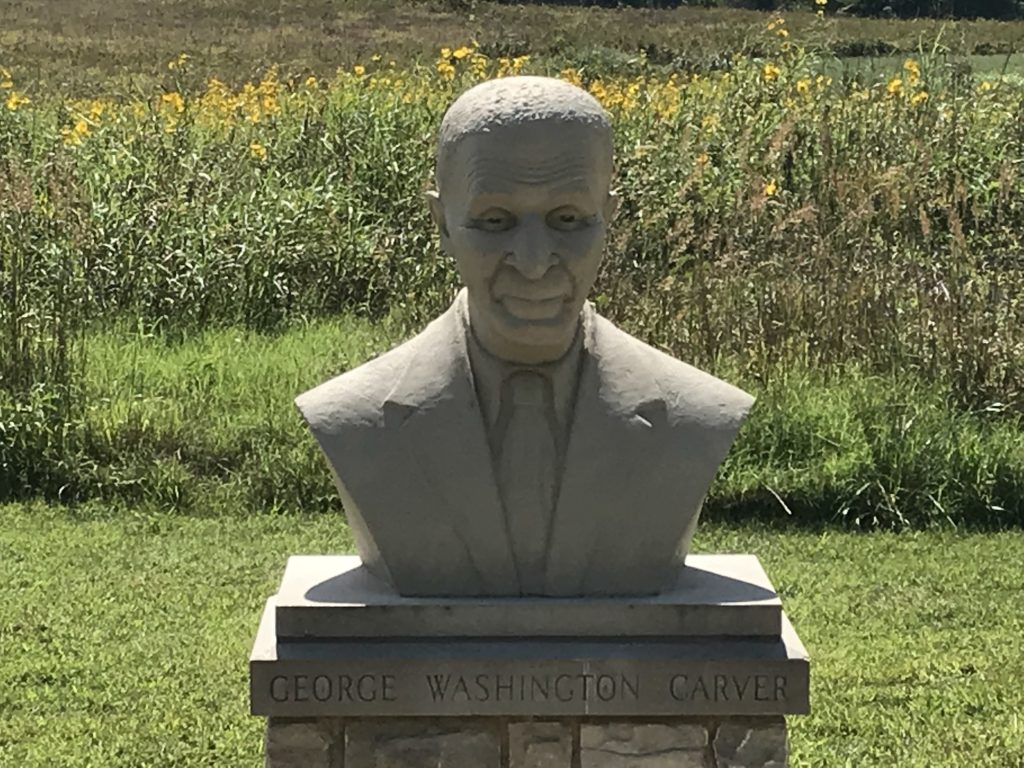
3. Ulysses S. Grant National Historic Site
For the final three Missouri landmarks, we have selected two extraordinary men and one amazing park. We begin at #3 with a site which honors the man who was finally able to defeat the Confederacy in the American Civil War. It’s the Ulysses S. Grant National Historic Site.
Like George Washington, Ulysses S. Grant’s greatest service to his country may have been as a general rather than a president. Most historians agree that Grant was the savior the Union needed as it wrestled with the difficult challenge of subduing the South and bringing an end to the Civil War.
While other Union Generals allowed Robert E. Lee to dictate their actions on the battlefield, Grant pursued his opponents with a single-mindedness of purpose. He did this no matter who his opponent was.
His bulldog tenacity and brilliant strategy broke the back of the Army of Northern Virginia thus bringing an end to the nation’s bloodiest conflict.
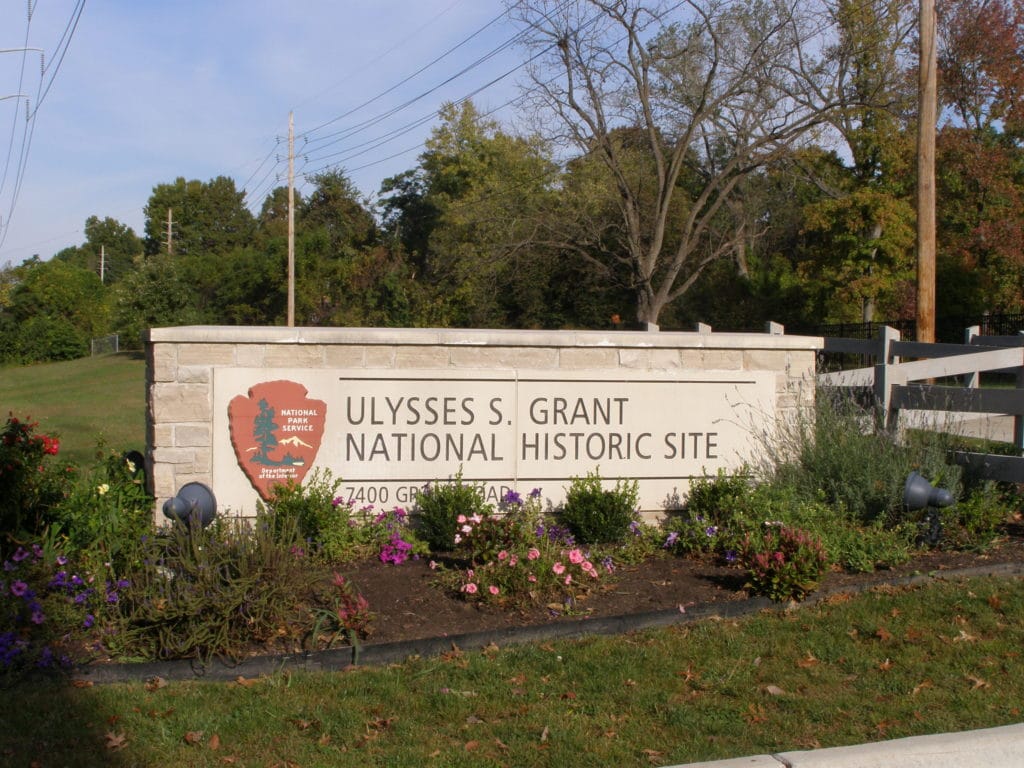
General Grant Versus President Grant
President Grant does not receive as high marks as General Grant from most historians. Overlooked by the scandals which rocked his administration, however, was his landmark Civil Rights Act, which ended separation in public accommodations and more.
Also overlooked were his relentless and successful efforts to root out the Klu Klux Klan and protect the political rights of African Americans in the South. Those rights were taken from them by the imposition of Jim Crow Laws, but this did not happen on Grant’s watch.
Rather, it was his Republican successors, beginning with Rutherford B. Hayes, who were all too willing to look the other way in return for the South’s acquiescence when it came to Republican political dominance at the presidential level.
To learn more about Grant’s successes on the battlefield and after he left the military, I would recommend Jean Edward Smith’s Grant.
My son Jim highly recommends Ron Chernow’s Grant for a fuller understanding of both the general who saved the Union and the far-sighted public servant who’s presidency is deeply misunderstood.
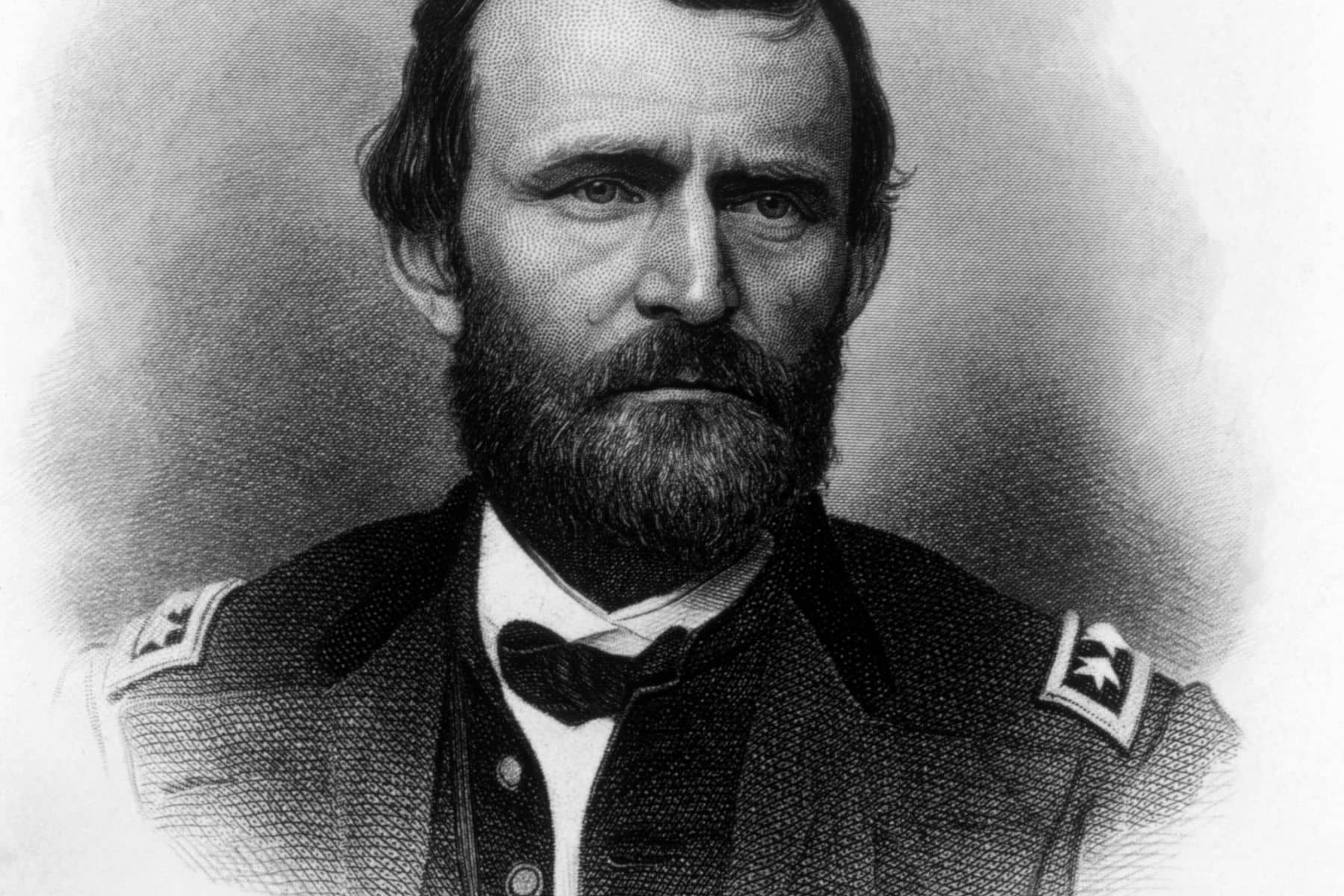
Why You Should Visit The U.S. Grant Historic Site
The Ulysses S. Grant National Historic Site is the home of the 18th President U.S. Grant and his wife, Julia Dent.
Visitors to the site have the opportunity to see a film on Grant’s life, tour a museum featuring exhibits which outline his achievements and tour the grounds where he lived. I would recommend beginning your tour by watching the 22-minute orientation film.
It provides insights into Grant’s military service during the American Civil War and his two terms as President of the United States.
The museum is located in a horse stable designed by Ulysses S. Grant and completed in 1872. It’s totally self-guided so feel free to take your time while exploring the museum’s six permanent exhibits.

2. Harry S. Truman National Historic Site
We’re on to our final two landmarks. In the runner-up position at #2 is a site which honors a man who many consider to have been one of America’s best presidents of the 20th century. It’s the Harry S. Truman National Historic Site.
Harry S. Truman (1884-1972) was the 33rd President of the United States, serving from 1945 to 1953. He became President following the death of President Franklin D. Roosevelt in April of 1945.
During his presidency, Truman oversaw the end of World War II and the beginning of the Cold War. He made the controversial decision to drop atomic bombs on the Japanese cities of Hiroshima and Nagasaki, which ultimately led to Japan’s surrender and the end of the war in the Pacific.
Truman also implemented the Marshall Plan, which was a program designed to provide economic assistance to Western European countries to help them rebuild after World War II. He was also a strong advocate for civil rights and signed executive orders desegregating the armed forces and federal workplaces.
In addition, Truman was instrumental in the establishment of the United Nations and played a key role in the creation of the North Atlantic Treaty Organization (NATO). He also supported the creation of the State of Israel, which was established in 1948.
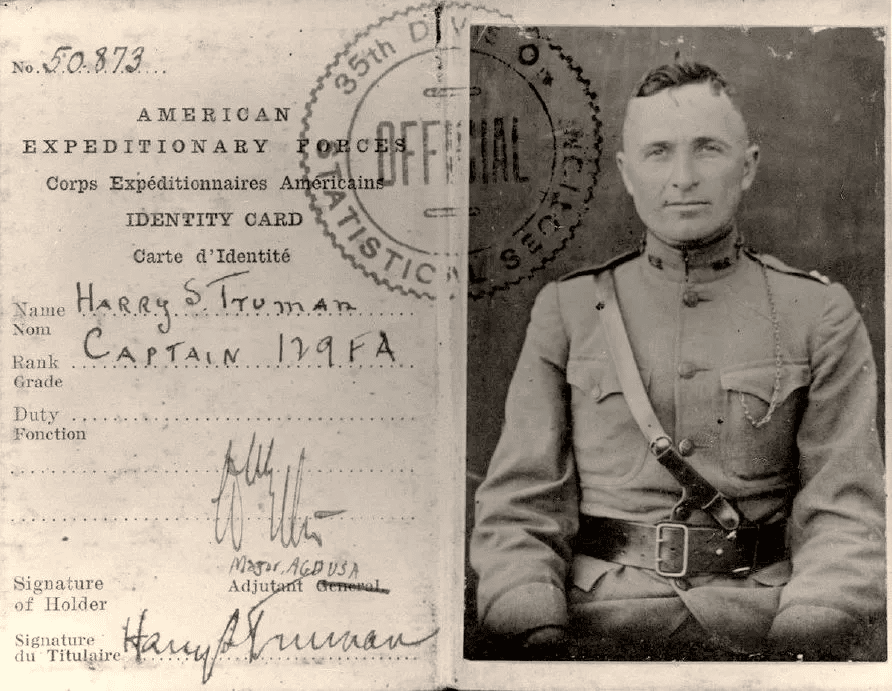
A National Historic Site Worth Seeing
You can learn more about this remarkable leader by visiting the Harry S. Truman National Historic Site. This site is made up of five houses in Independence and Grandview, Missouri. It features locations that are important during the years before and after Truman lived in the White House.
Visitors can tour the original Truman home and follow in his footsteps with a walking tour of Truman’s neighborhood. They can also visit the family farm in Grandview, explore exhibits about his private life in his cousin Noland’s house and examine oral histories from people who knew him well.
Also in Independence, Missouri, is the Harry S. Truman Presidential Library & Museum. There visitors can learn about all things relating to Truman and his presidency.
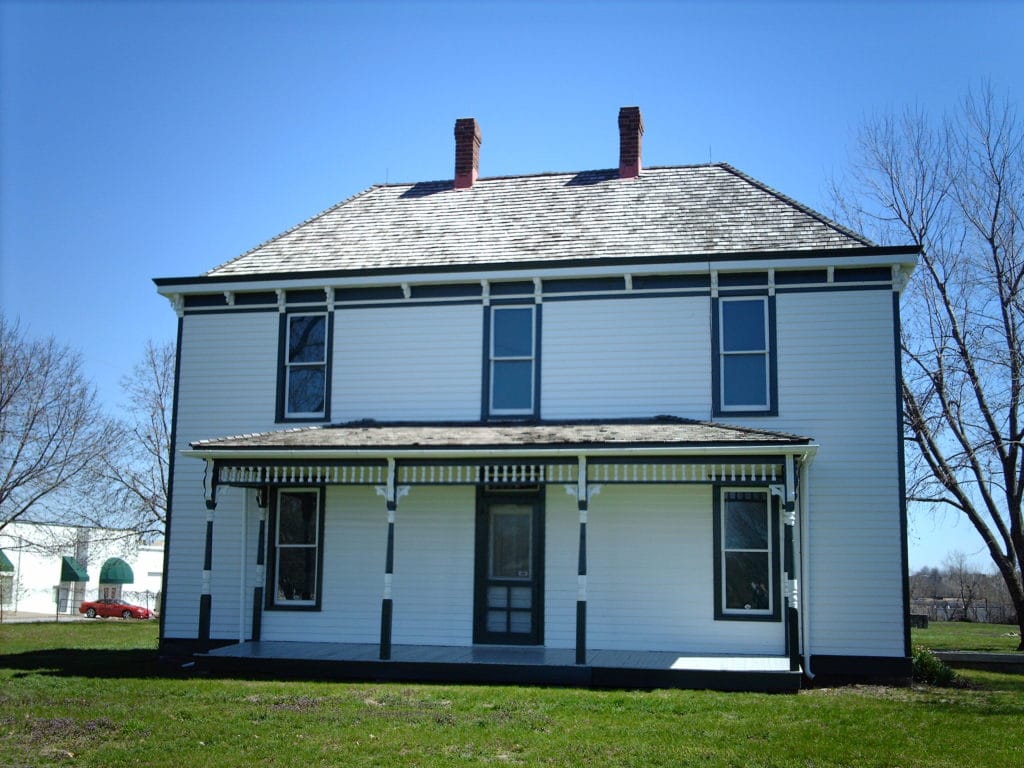
1. Gateway Arch
Just because We’re More Than Just Parks doesn’t mean that we’ve forgotten about them! As the #1 Missouri landmark we have chosen the Gateway Arch, which happens to be a part of Gateway Arch National Park. So, our message to you is see the arch and the park.
The Gateway Arch symbolizes Missouri’s important role in the Westward Expansion of the United States during the nineteenth century. It’s also the entrance to one of America’s 63 national parks.
At a mere 91 acres, it’s a part of Gateway Arch National Park which is the smallest national park in America. It doesn’t even have a natural area. So why, you might ask, is it a national park? That’s a good question.
But we try answering that question, we’ll give you a little bit of the history of this special place.
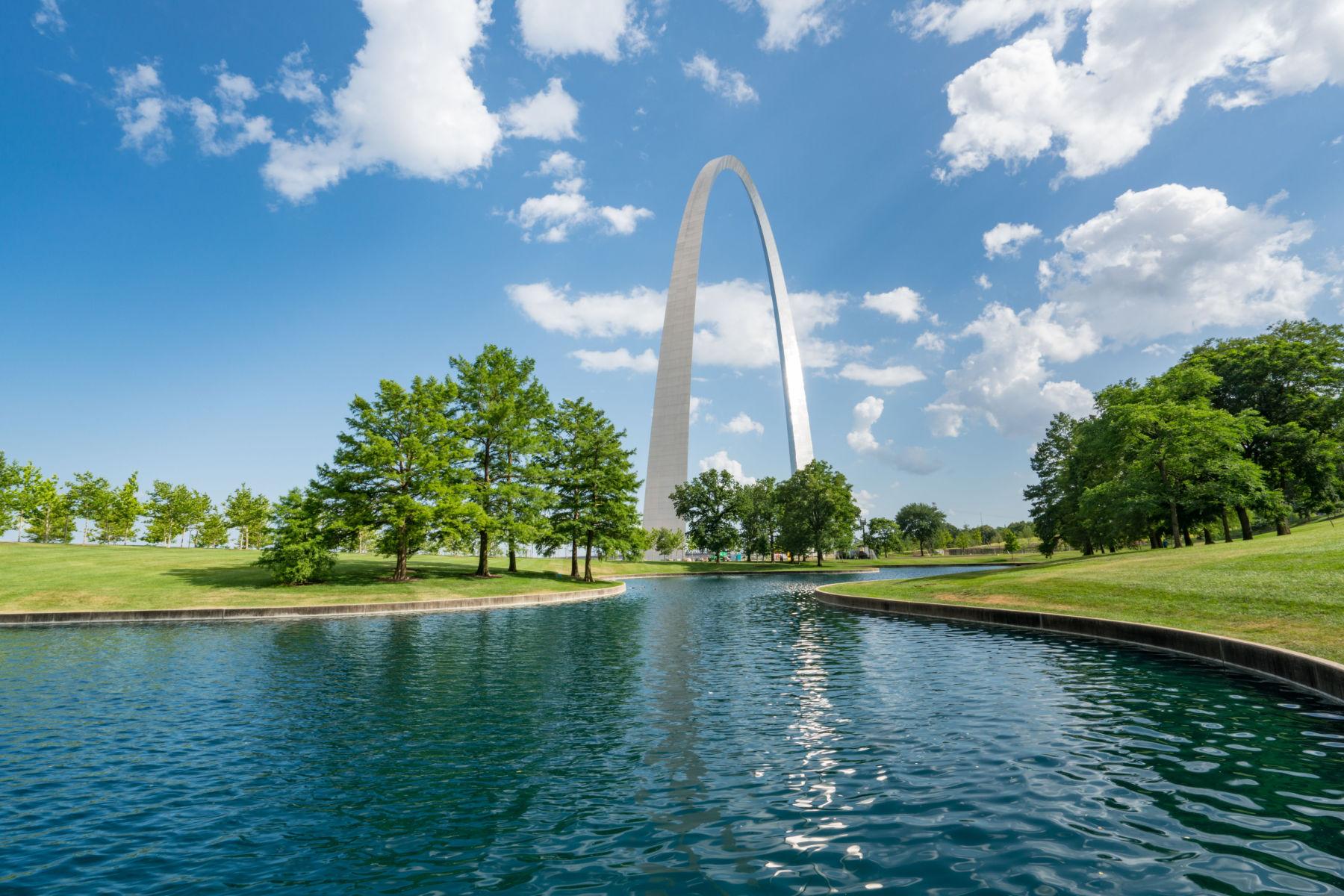
Jefferson’s Vision
St. Louis was the capitol of the Louisiana Territory from 1812 until Missouri gained statehood in 1821. It was the vision of America’s third president, Thomas Jefferson, that Missouri should serve as the “Gateway to the West.” That vision is symbolized today by the iconic Gateway Arch.
In describing the arch, Kimberlee N. Ried writes:
“It rises gracefully toward the sky, then elegantly curves back toward Earth as the combined waters of the Mississippi and Missouri rivers swiftly flow by at its base—a symbol of the accomplishments and dreams that drive the American experience.” (Source: Kimberlee N. Ried, A Gateway to the West, Prologue Magazine, Fall 2016, Vol. 48, No. 3)

From Sea To Shining Sea
The arch represents the jumping-off point of 19th century America’s age of westward exploration. From the newly acquired Louisiana Purchase to Lewis & Clark’s Corps of Discovery and the subsequent westward expansion of the North American continent, it is the doorway to America’s “manifest destiny.”
Symbolically speaking, a journey through this fabled arch signifies our nation’s grand mission to occupy all of the land from sea to shining sea.
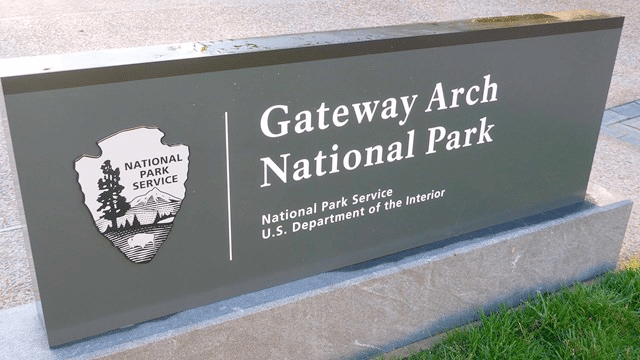
The Best Visitor Center & Most Expensive
Before becoming a flagship national park in 2018, the Gateway Arch Visitor Center underwent a $380 million dollar renovation. That’s right! $380 million dollars!
Totaling more than 150,000 square feet, it’s accessed by a semi-circular entryway that is accentuated by the site’s curving geometry. The lobby is actually dug into a berm and organized around a circle of water. An artistic masterpiece!

The Gateway Arch
Speaking of artistic masterpieces, is it possible to provide enough superlatives about that magnificent archway? I think not.
At 630 feet about the Mighty Mississippi River, the Gateway Arch is one of the most recognizable and beloved landmarks in the United States.
The monument we know today first began in 1935, when President Franklin D. Roosevelt designated property along the St. Louis riverfront to be developed as the Jefferson National Expansion Memorial (now known as Gateway Arch National Park).
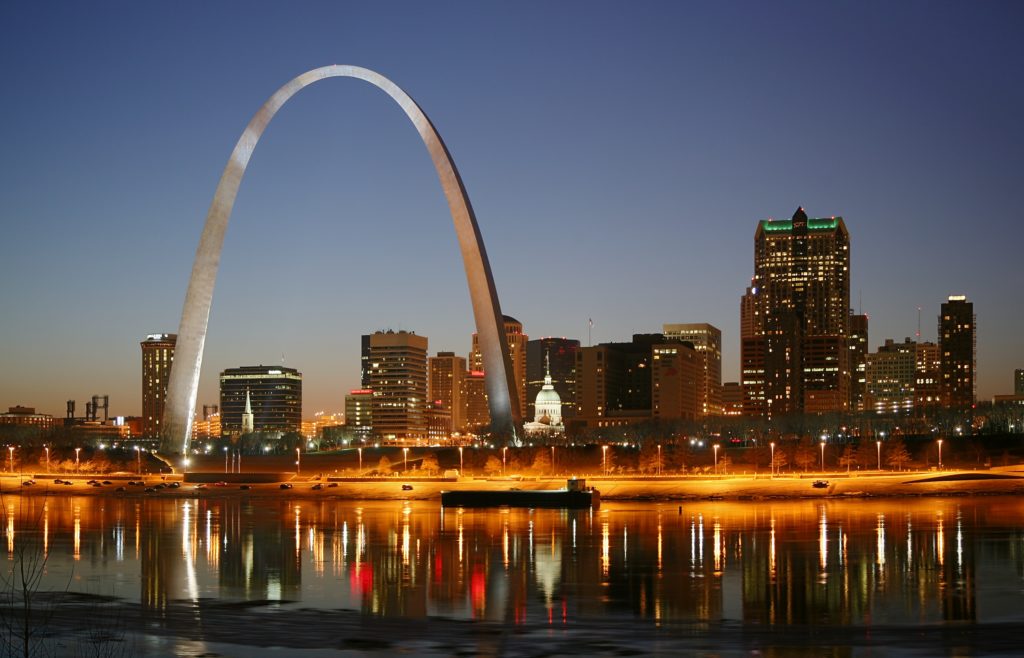
Eero Saarinen’s Vision
A nationwide design competition was launched in 1948 to determine what shape the Memorial would take. Architect Eero Saarinen’s design won and, in 1963, construction began on a stainless steel arch.
It was completed two years later in 1965. Today, it stands as a symbol of national identity and an example of mid-century modern design.
Visitors need to check out the breathtaking view at the top of the arch. One side overlooks the Mississippi river and Illinois while the other overlooks the city of St. Louis with Busch Stadium and downtown in the background. It’s well worth a trip to the top to see this amazing view.
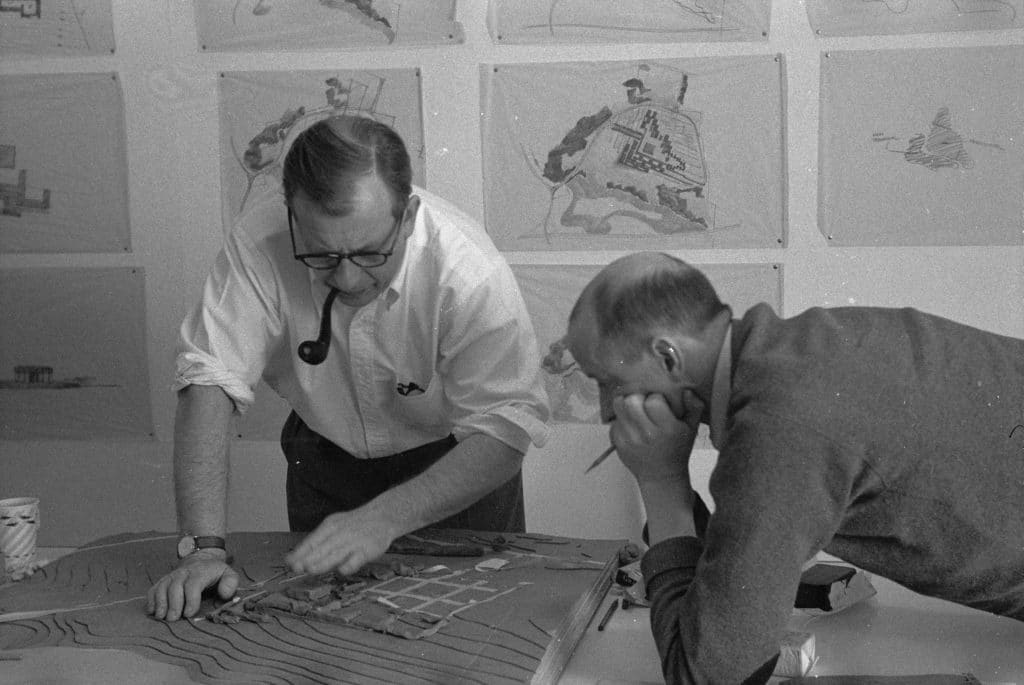
Luther Ely Smith Park
Luther Ely Smith was a 19th century St. Louis lawyer and civic booster who first proposed a riverfront memorial for President Thomas Jefferson. It was his efforts which led to the creation of the Gateway Arch.
It is therefore fitting and appropriate that the park which bears his name should welcome visitors to the Jefferson National Expansion Memorial and Gateway Arch National Park.
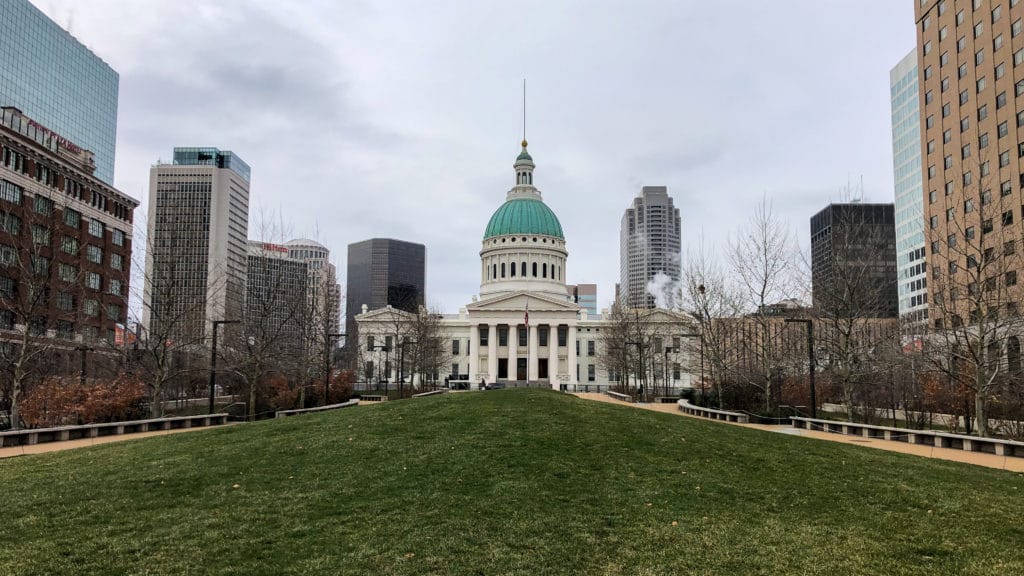
So, Why Did It Become A National Park?
Sometimes, it’s more important who you know than what you know. Missouri’s Senator Roy Blunt sponsored changing the Jefferson Expansion National Memorial from a national memorial to a national park.
What is the National Park Service’s definition of a national park? Simply put, “a national park contains a variety of resources and encompasses large land or water areas to help provide adequate protection of the resources.”
Does Gateway National Park meet this definition? No.
I guess that old saying is true. It’s more important who you know than what you know.

Map Of Missouri Landmarks
List Of Missouri Landmarks
- The Gateway Arch
- Harry S. Truman National Historic Site
- Ulysses S. Grant National Historic Site
- George Washington Carver National Monument
- Wilson’s Creek National Battlefield
- City Museum
- Mark Twain Boyhood Home & Museum
- Fort Osage National Historic Landmark
- Laura Ingalls Wilder Home & Museum
- Missouri Botanical Gardens
- Scott Joplin House State Historic Site
- Lake Of The Ozarks
- Mutual Musicians Foundation Building
- Anheuser-Busch Brewery
- General John J. Pershing Boyhood Home State Historic Site
Why Trust Us About Missouri Landmarks?
We’re Jim Pattiz and Will Pattiz, collectively known as the Pattiz Brothers and we absolutely LOVE the national parks.
You should probably know that we don’t just make this stuff up out of thin air. We’ve spent our entire adult lives exploring and filming America’s national parks and public lands.
We’ve worked with the National Park Service, the Department of Interior, USDA, U.S. Forest Service, and more for years creating films on important places and issues. Our work has been featured in leading publications all over the world and even some people outside of our immediate family call us experts on the national parks.
And, in 2018, our father – having spent a lifetime teaching history – joined us so that he could help us to tell the stories behind these amazing places.
Meet The Parks Brothers
We Hope You’ll Follow Our Journey

Our goal here at More Than Just Parks is to share the beauty of America’s national parks and public lands through stunning short films in an effort to get Americans and the world to see the true value in land conservation.
We hope you’ll follow our journey through the parks and help us to keep them the incredible places that they are. If you’re interested in joining the adventure then sign up below!
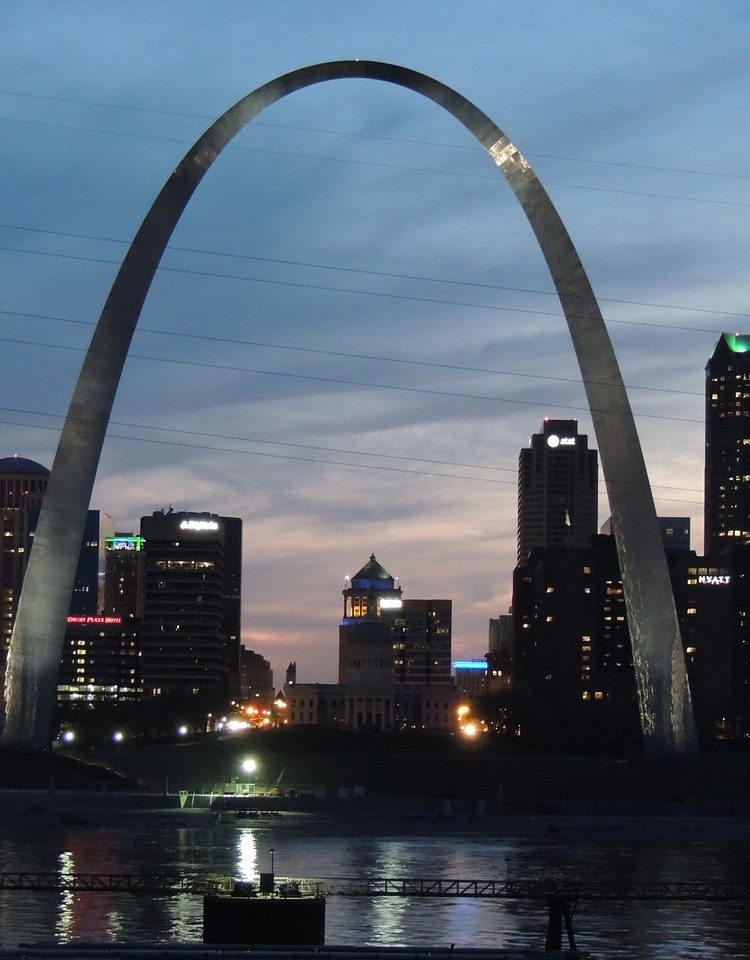
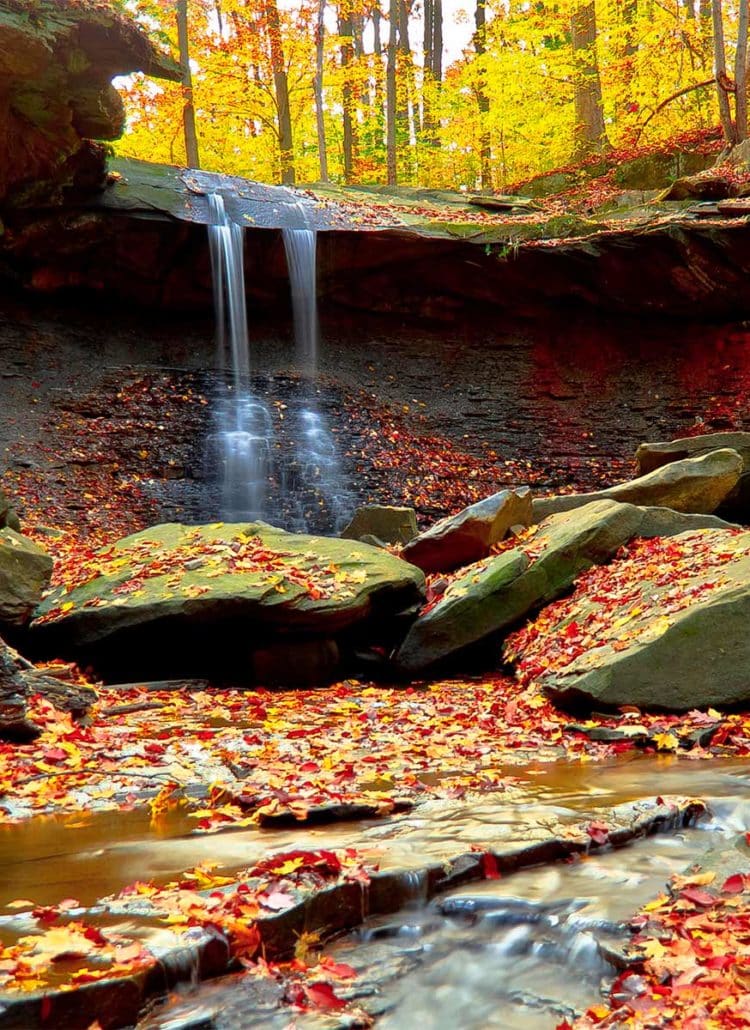



Leave a Reply